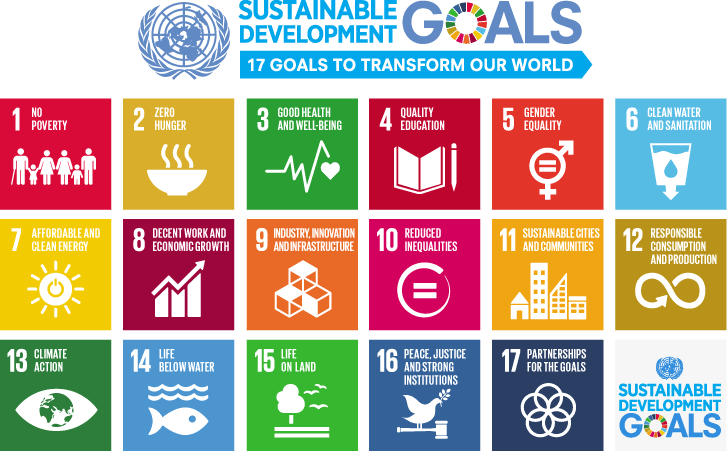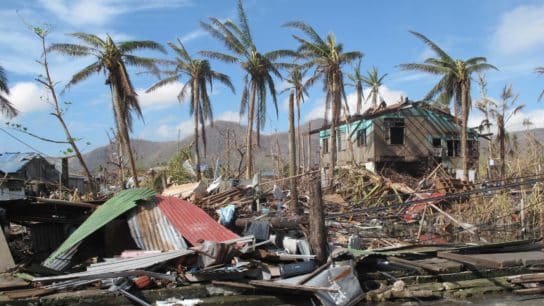This weekly round-up brings you key climate news from the past seven days, including the long-fought adoption of the Nature Restoration Law in Europe and a grim report on air pollution.
—
1. EU Ministers Give Green Light to Contested Nature Restoration Law in ‘Huge Win’ for Nature
The first-of-its-kind Nature Restoration Law, first proposed in June 2022 by the European Commission as part of the bloc’s ambitious Green New Deal, aims to put measures in place to restore at least 20% of the European Union’s (EU) land and seas by 2030, and all degraded ecosystems by mid-century.
In order to meet the established restoration target, member states will be required to restore at least 30% of their land and sea habitats deemed in poor condition by 2030 – including forests, grasslands, and wetlands but also rivers, lakes, and coral beds – increasing to 60% by 2040, and 90% by mid-century. Over 80% of European habitats are in poor shape, according to EU data. Member states would also be expected to submit national restoration plans to the European Commission detailing ways in which they plan to achieve these targets and adopt measures to prevent further deterioration of restored areas.
A crucial part of the bloc’s green agenda, the law is one of the biggest environmental policies the EU has ever put forward and the first green policy approved since the European Parliament elections earlier this month, which saw the Greens lose a third of their seats amid a rise in right-wing parties. It also places the bloc a step closer to reaching its international commitments under the Kunming-Montréal Global Biodiversity Framework agreed at the 2022 UN Biodiversity Conference (COP15).
Read more here.
2. Air Pollution Ranks 2nd Risk Factor of Deaths Globally: Report
Released Tuesday by independent US-based non-profit research organization Health Effects institute (HEI) in partnership with UNICEF, the fifth edition of the State of Global Air (SoGA) report found that approximately 8.1 million deaths globally that year were linked to air pollution, making it the second leading risk factor for death, after high blood pressure and before tobacco.
Of all deaths, 709,000 were children under the age of five – representing 15% of all global deaths for this age group and making it the second-leading risk factor for death globally for this age group, after malnutrition, despite a 35% decrease in mortality since 2010. More than 70% of these deaths were linked to household air pollution, which is caused by the burning of unclean fuels and solid fuel stoves that release dangerous pollutants.
Read more here.
3. 95% of the Earth’s Soil on Course to Be Degraded by 2050
A new map from the Save Soil movement – backed by the UNEP, UNCCD, UNFAO, WFP, and IUCN amongst others – illustrates the shocking percentage of global soil degradation predicted by 2050. The maps are being released to mark the 30th anniversary of the UN Drought and Desertification Convention (UNCCD) and the World Day to Combat Desertification and Drought on June 17.

Every second, an equivalent of four football fields of healthy soil becomes degraded – adding up to a total of 100 million hectares every year. Non-degraded healthy soil is a direct necessity for 95% of the food production for more than 8 billion people.
Degraded soil, resulting largely from intensive farming practices, is low in “organic matter,” which means it does not retain water as effectively, making us vulnerable to climate shocks such as droughts, wildfires, and water shortages.
Read more here.
4. Only 16% of SDG Targets on Track to Be Met by 2030, Report Finds
Released Monday by the UN Sustainable Development Solutions Network (SDSN), the annual assessment of UN Member States’ performance on the SDGs found that progress has in some cases reversed, including on obesity, press freedom, sustainable nitrogen management, extinction rates, and life expectancy at birth. The latter, the report says, is due “in a large part” to the Covid-19 pandemic and other country-specific factors. Meanwhile, progress is particularly off-track on SDG targets related to good and land systems.
Overall, the pace of progress varies greatly from country to country, with Nordic regions outperforming the rest of the world. Finland ranked first on the SDG Index, followed by Sweden, Denmark, Germany, and France. Progress in BRICS and BRICS+ nations – which include Brazil, the Russian Federation, India, China, South Africa, Egypt, Ethiopia, Iran, Saudi Arabia, and the United Arab Emirates – has been faster than the world average, according to the assessment, while poor and vulnerable nations – including Small Island Developing States (SIDS) – lag far behind.

Adopted in 2015, the SDGs consist of 17 goals and 169 targets to ensure human well-being, economic prosperity and environmental protection simultaneously. The set goals are interdependent and provide a blueprint for a global partnership between developed and developing countries to achieve economic prosperity, environmental protections and to safeguard the well-being of people around the world.
Read more here.
5.Landmark UK Legal Battle Over Oil Well Plan Sets Important Precedent for Future Fossil Fuel Projects
The UK’s highest court on Thursday ruled that the climate impact of burning planet-warming fossil fuels – coal, oil and gas – must be taken into account when deciding whether to approve new projects.
In the verdict, handed down in the early hours of Thursday, the UK’s Supreme Court said that under the Town and Country Planning Regulations 2017, new development projects can only be approved if an Environmental Impact Assessment (EIA) to “identify, describe and assess the likely ‘direct and indirect significant effects’ of the project on the environment, including (among other factors) the impact on climate” is carried out.
The case, intiated by the campaigner Sarah Finch, concerned a developer’s application to Surrey County Council for planning permission to expand an oil production from a well site at Horse Hill in the Surrey countryside. Finch argued the council’s EIA of the project should have accounted for greenhouse gas emissions from using the oil – known as “scope 3” emissions – when assessing the environmental impacts of the project, and not just those generated at the site itself.
In a statement seen by the Guardian, Surrey County Council acknowledged the court’s decision and said permission for the Horse Hill project “remains to be determined in due course.”
Read more here.













